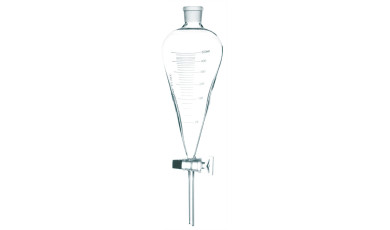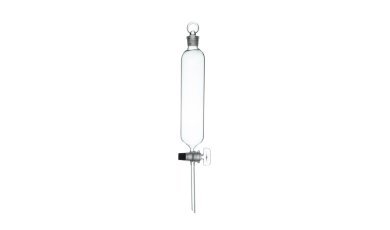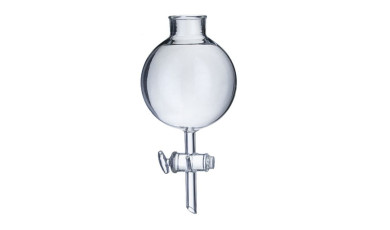Separatory Funnel
Separatory Funnels for Clean Phase Separation
You know those extraction procedures where you're standing there, swirling and venting, hoping you've got a clean separation? That's where separatory funnels really earn their keep in the lab. They're built from borosilicate glass that'll handle pretty much whatever solvent you're throwing at it, and the design hasn't changed much because, honestly, it just works.
Efficient Liquid-Liquid Extraction with Separatory Funnels
When you're doing liquid-liquid extractions, you need something that lets you see what's happening and gives you control over the drain rate. These funnels come in sizes from 50mL up to 2000mL, so whether you're running analytical samples or scaling up a synthesis, there's a size that'll fit your workflow. The pear-shaped body isn't just for looks—it concentrates the interface between phases so you can see exactly where to stop draining. Speaking of shapes, the Funnel Separatory pear shape and Funnel Separatory pear shape ISO4800 versions give you standardized options depending on your lab's requirements.
Stopcock Mechanisms for Controlled Phase Separation
Here's where things get interesting. You've got two main stopcock options:
- Glass stopcocks: Traditional ground glass that works great for most organic solvents—just remember to grease them properly or you'll be dealing with frozen valves
- PTFE screw stopcock: Way better chemical resistance, especially if you're working with strong bases that'll etch glass. No greasing needed, which means one less contamination source
The PTFE option costs a bit more upfront, but you'll save time on maintenance. If you're already using Hollowed glass stoppers elsewhere in your setup, you know how important proper sealing is.
Ground Glass Joint Standards and Compatibility
Most separatory funnels come with 24/29 or 24/40 standard taper joints at the top. Make sure this matches your other glassware—there's nothing worse than realizing mid-procedure that your stopper doesn't fit. The ground joints create a secure seal when you're inverting and venting, which you'll be doing a lot during extraction. You can pair these with other lab essentials like Buchner Flask setups when you're running multi-step purifications.
Volume Graduations for Accurate Measurements
The graduated markings etched into the glass aren't lab-grade accurate like volumetric flasks, but they're handy for rough volume estimates. When you're adding your extraction solvent, you can eyeball ratios without pulling out a graduated cylinder every time. Pro tip: always vent after adding volatile solvents—pressure buildup is real, and I've seen stoppers pop out. For more precise liquid transfers, keep standard Funnels nearby for your initial additions.
Our partners










